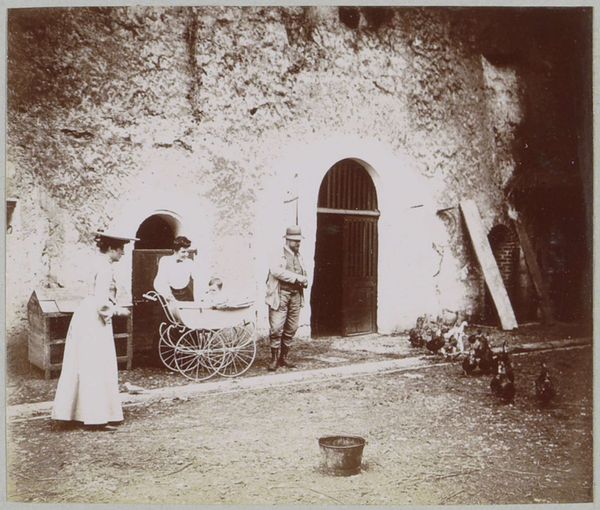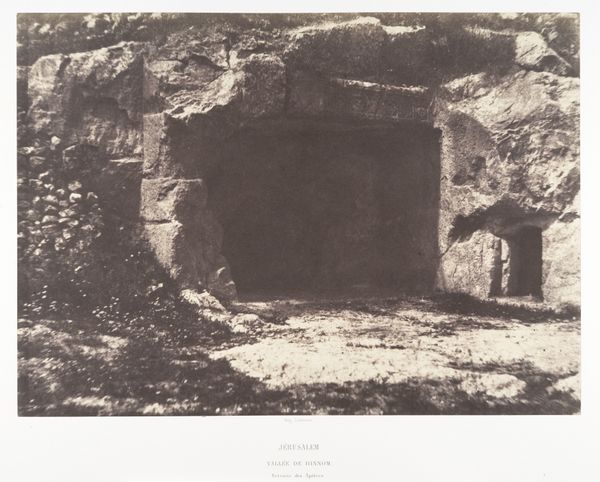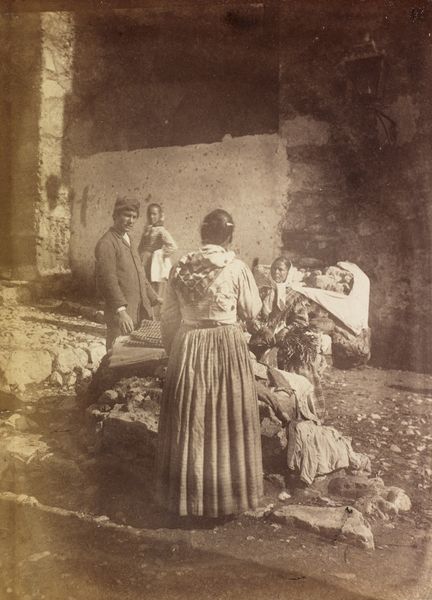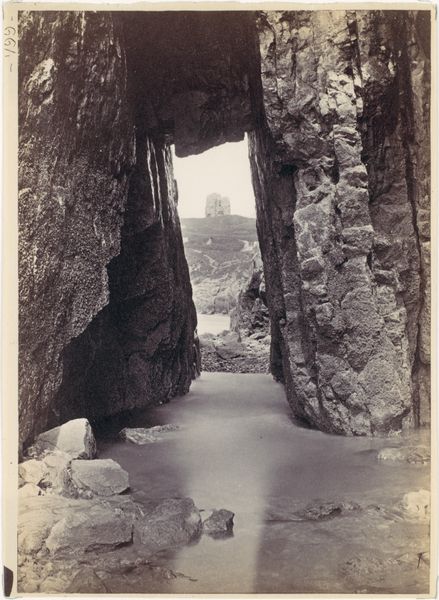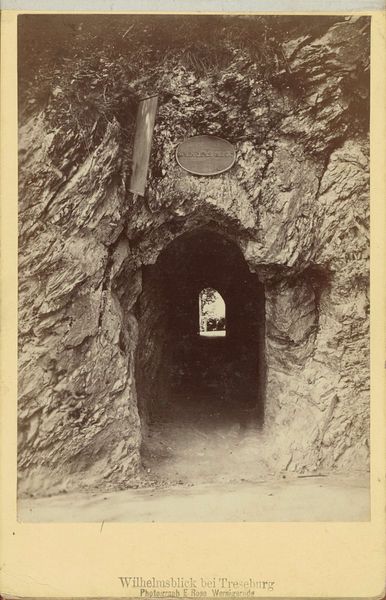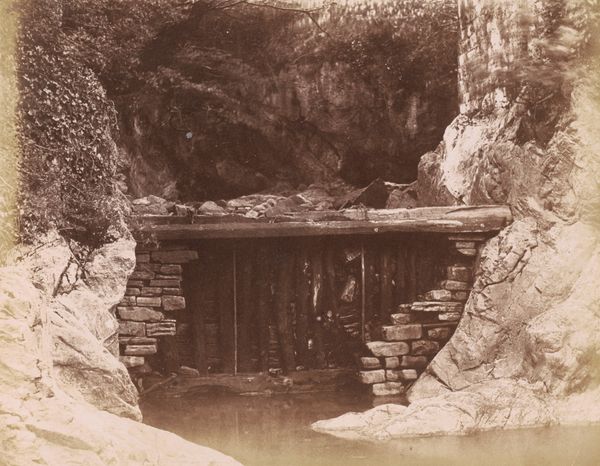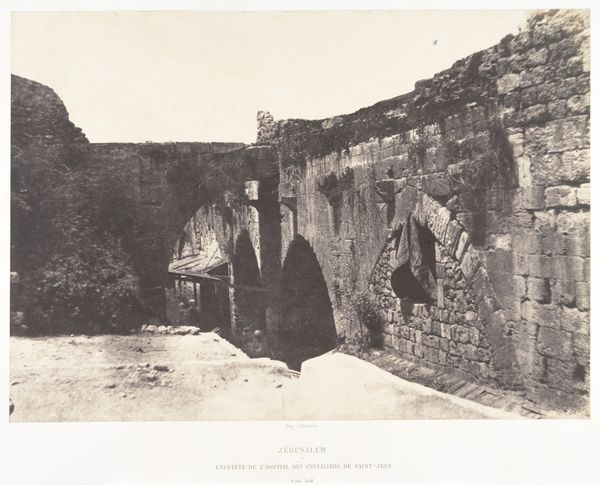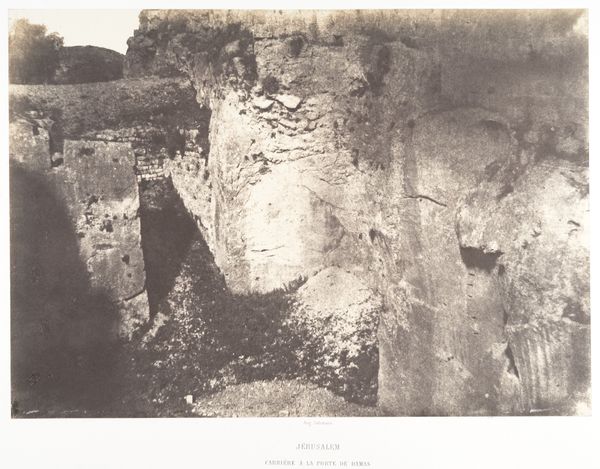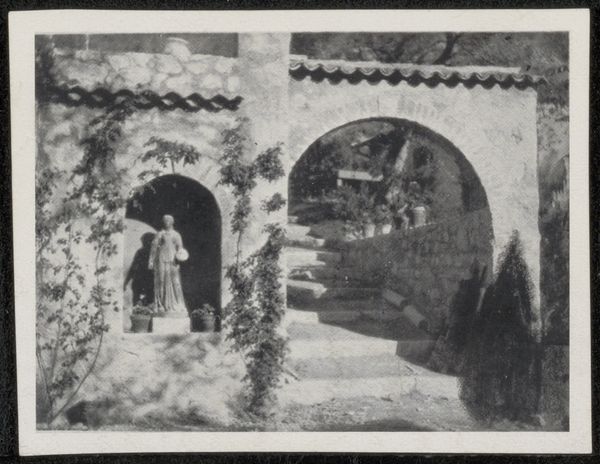
Twee vrouwen en een man bij de ruïne van het Kasteel van Coucy Possibly 1902 - 1908
0:00
0:00
print, photography
#
print photography
#
pictorialism
# print
#
landscape
#
figuration
#
photography
#
genre-painting
Dimensions: height 70 mm, width 83 mm
Copyright: Rijks Museum: Open Domain
Editor: This is "Two Women and a Man at the Ruin of Coucy Castle," a photograph, probably from between 1902 and 1908. It feels very posed, but there's something haunting about the ruin, and the soft-focus light. How do you interpret this work, especially within its historical context? Curator: The deliberate softness is characteristic of Pictorialism, which often romanticized the past and picturesque landscapes. Considering this, and given the date, the ruin becomes more than just scenery. It speaks to ideas of national identity and collective memory in early 20th-century Europe. The figures are neatly arranged like characters on a stage, looking away as a theatrical experience of witnessing history. What feelings does the artist's emphasis on "ruin" generate for you? Editor: It's almost melancholy, like they are mourning the loss of the past and its power. Is it maybe a comment on the decline of aristocracy and feudalism? Curator: Precisely! The image evokes a sense of nostalgia for a lost era while simultaneously showcasing the power of the modern gaze. Note that the castle has been feminized through this composition, being framed as it is. Now I'd ask: Whose history is valorized when we produce images such as this? How do questions of access, memory, gender and power operate? Editor: I guess it invites us to reconsider whose stories get told through these romanticized images, and who is left out of this nostalgic vision. Curator: Exactly! Reflecting on who benefits from particular historical narratives, and whose voices are marginalized, brings photography's underlying power structures to light. It is always useful to ask whose past this is and whose present is shaped by it. Editor: It's amazing how much context can change your view of something that seemed, at first glance, like just a pretty picture! Thanks, I have much to reflect on.
Comments
No comments
Be the first to comment and join the conversation on the ultimate creative platform.

